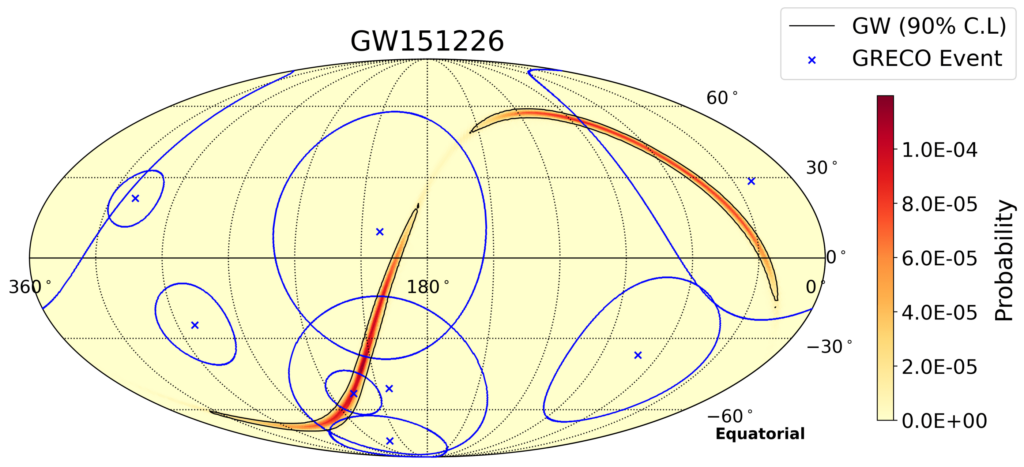Gravitational waves (GWs) are produced by some of the most extreme astrophysical phenomena, such as black hole and neutron star mergers. They have long been suspected as astrophysical sources of neutrinos, ghostlike cosmic messengers hurtling through space unimpeded. Thus far, common astrophysical sources of neutrinos and photons, as well as common sources of gravitational waves and light, have been identified. However, no one has yet detected sources that emit both gravitational waves and neutrinos.
In a study recently submitted to The Astrophysical Journal, the IceCube Collaboration performed a new search for neutrinos from GWs at the GeV-TeV scale. Although no evidence of neutrino emission was found, new upper limits on the number of neutrinos associated with each gravitational wave source and on the total energy emitted by neutrinos for each source were set.
Previously, IceCube searched for neutrinos from GW sources using the TeV-PeV neutrinos detected by the main IceCube Neutrino Observatory, a cubic-kilometer detector enveloped in Antarctic ice at the South Pole. This time, collaborators used data taken with the DeepCore array, the innermost component of IceCube consisting of sensors more densely spaced than in the main array. DeepCore can detect lower energy (GeV and upward) neutrinos than is possible with the larger main array.

The analysis looked for temporal and spatial correlations between 90 GW events detected by the Laser Interferometer Gravitational-Wave Observatory (LIGO) and the Virgo gravitational wave detectors and neutrinos detected by DeepCore. The researchers found no significant excess of neutrinos from the direction of the GW events but set stringent upper limits on the neutrino flux and limits on the energies associated with neutrinos from each GW source.
“These results do not mean that all hope is lost for detecting such joint emissions,” says Aswathi Balagopal V., a postdoctoral associate at UW–Madison and co-lead of the analysis. “With improvements in directional reconstructions for low-energy neutrinos, which is expected with better methods and with the inclusion of the IceCube Upgrade, we will be able to achieve better sensitivities for such joint searches, potentially leading to a positive discovery.”